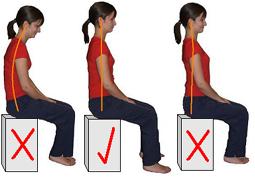In the tapestry of aging, joint health stands out as a crucial thread that holds together the quality of life for the elderly. As we step into our later years, our joints, those vital hinges that enable our movements, begin to show signs of wear and tear. This natural progression brings to the forefront the importance of maintaining joint health, especially for those in elder care, including individuals receiving in-home care or living with conditions like dementia. This guide delves into the heart of joint health, unraveling its complexities and presenting practical, compassionate strategies. It’s a journey that goes beyond mere physical care, encompassing the dignity, independence, and well-being of our seniors. Here, we explore how elder caregivers, healthcare professionals, and the elderly themselves can work together to keep these crucial joints healthy, ensuring that every step in the golden years is taken with comfort and ease.
Understanding Joint Health in the Elderly
Joints are the connectors between bones, providing support and helping us move. As we age, these joints can wear down or become inflamed, leading to pain, stiffness, and reduced mobility. Conditions like arthritis are prevalent in the elderly, making joint care a priority in elder care.
Regular Exercise for Joint Mobility
- Importance of Activity: Regular exercise is crucial for everyone, especially seniors. It improves circulation, which is vital for joint health, and enhances overall well-being.
- Exercise Recommendations: Experts suggest at least 30 minutes of daily exercise. Activities like walking, swimming, or biking are excellent low-impact options.
- Weight Training: If approved by a healthcare provider, weight training can strengthen muscles around joints, providing better support and reducing injury risk.
Weight Management in Elder Care
- Impact of Weight on Joints: Excess weight can strain joints, exacerbating pain and mobility issues. Weight management is therefore crucial for joint health.
- Healthy Weight Goals: Consulting with healthcare professionals to determine a healthy weight and working towards it can significantly alleviate joint problems.
Nutrition for Joint Health
- Anti-Inflammatory Foods: A diet rich in omega-3 fatty acids (like flax seeds and fish) and vitamin D can have an anti-inflammatory effect, benefiting joint health.
- Balanced Diet: A well-balanced diet ensures that all parts of the body, including the joints, receive the necessary nutrients to function optimally.
Exercise Precautions for the Elderly
- Consultation with Physicians: Before starting any exercise regimen, it’s important for seniors, especially those with existing health conditions, to consult with their physicians.
- Listening to the Body: Seniors and caregivers should be attentive to any pain or discomfort during exercise, as it may indicate the need for a modified approach.
Daily Stretching and Flexibility
- Maintaining Range of Motion: Daily stretching helps keep joints flexible, which is essential for mobility and preventing injuries.
- Gentle Stretching Practices: Yoga or Tai Chi can be particularly beneficial for seniors, offering gentle ways to maintain flexibility and joint health.
Role of Caregivers in Joint Health Management
- Assistance with Exercise Routines: Elder caregivers can help seniors with their exercise routines, ensuring they are performed safely and effectively.
- Monitoring for Signs of Joint Issues: Caregivers should be vigilant for signs of joint pain or discomfort in seniors, especially those who may not be able to communicate their pain effectively, such as individuals with dementia.
Joint Health in Dementia Care
- Adapting Exercise for Cognitive Challenges: For seniors with dementia, customized care plans that involve exercise routines may need to be adapted to suit their cognitive abilities and comfort levels.
- Importance of Routine: Maintaining a regular routine of gentle exercise can be beneficial for both joint health and cognitive function in dementia patients.
After-Hospital Care and Joint Health
- Post-Hospitalization Exercise: After hospital care, focusing on joint health is crucial. Gentle exercises can aid in recovery and prevent joint stiffness.
- Collaboration with Healthcare Providers: Working closely with healthcare providers to develop a post-hospitalization exercise plan is essential for safely maintaining joint health.
Conclusion
As we conclude this comprehensive exploration into maintaining joint health in the elderly, it’s clear that this aspect of care is not just a matter of physical health but a cornerstone of dignity and independence in the later stages of life. The strategies and insights provided here aim to empower caregivers, healthcare professionals, and seniors themselves to approach joint health with knowledge, empathy, and effectiveness. From the gentle stretches of a morning routine to the careful monitoring of a caregiver, every action taken is a step towards enhancing the quality of life for our elderly loved ones.
In this journey of aging, where every movement counts, maintaining joint health becomes a symbol of cherishing and respecting the life experiences that each wrinkle and every step carry. It’s about ensuring that the golden years are not just endured but lived with grace, comfort, and joy. As we move forward, let us carry the message that caring for our joints is indeed caring for our very ability to embrace life in all its fullness, even as the years advance.



